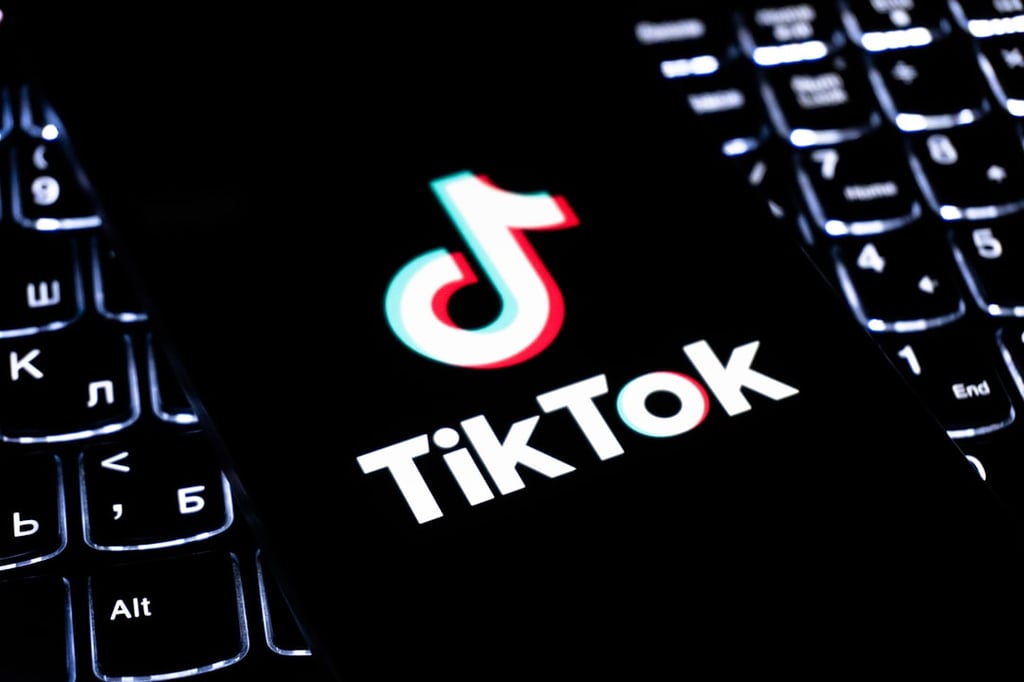Steve Jobs unveiled plans yesterday for a new Apple campus. The project is huge, visionary, impractical, expensive and beautiful. In other words, it’s an Apple product.
Jobs presented the plans in outline to the Cupertino, Calif., City Council, the Silicon Valley city where Apple’s current headquarters and future campus reside.
Apple watchers are forever reading whatever tea leaves are available to divine Apple’s intentions, vision and plans for the future. This is increasingly important because Apple’s products are not only growing across the board in market share, but those products are arguably the most influential in shaping the direction of the entire industry. If you look at the iPhone and the iPad, and the iOS and App Store, you can see how Apple’s products influence most major products in the industry.
I think Apple’s new building tells you everything you need to know about Apple, its CEO and the future of its products.
Here’s what Apple’s campus plans tell us:
Apple thinks big.
Apple’s new building is an absolutely enormous circle. My own estimate based on Jobs’ presentation and Google Maps puts it at 1,200 feet in diameter. That means a person gazing out the window on one side of the building will be four football fields in distance away from a person doing the same thing on the other side, yet they will be in the same building. To walk around the outside of the building will involve a slog of three-quarters of a mile, and will take you at about 15 minutes. It’s huge.
The ambition of Apple’s building reveals Apple’s ambition as a company. They want to be the biggest and most successful maker of computers and mobile devices, control Hollywood and own the living room.
Apple is obsessed by simplicity through consolidation.
The whole project is designed to solve the problem of 12,000 extra employees in the area, staffers who can’t fit in Apple’s existing headquarters campus. Any other company would build a campus containing dozens of buildings. This is what Google, Microsoft and every other company facing growth have in fact done. But Apple is putting them all into one single building, which is also within walking distance to their headquarters.
Putting this many employees in a single building is inefficient, expensive, difficult and problematic in many ways (creating challenges around safety, parking, ease of access and others). But to Apple, simplification through consolidation trumps all other considerations.
The intent to consolidate the functionality of the iPhone 4’s antenna with the functionality of its frame got Apple into trouble with the “antenna-gate” fiasco. Apple was willing to sacrifice call quality for simplicity through consolidation.
The impulse that resulted in the iPad having only one round button is the same impulse that will result in those 12,000 employees being crammed into one round building.
If Apple can simplify through consolidation, it will.
Apple has an instinct for “shock and awe.”
Silicon Valley is carpeted with endless office parks, which are efficient, inexpensive to build and maintain, convenient and practical. They also, according to Jobs, “get pretty boring pretty fast.”
In recent years, as Jobs has successfully infected other Apple executives with his way of doing things, the company has become incapable of doing things that don’t impress in a big way. The new building looks like it could become one of California’s most impressive architectural achievements. It’s the kind of thing that will probably move people emotionally, just by looking at it. And this is what Apple attempts with its hardware products and retail stores.
Apple understands the marketing power of symbols.
After this monstrosity is built (Jobs’ optimistic estimate is 2015), you can be sure that the building will always be shown on news programs and articles about the company. Spaceship Apple will become a symbol of the company, its stature, aesthetic and power.
The giant structure will physically lord over Silicon Valley as the unmistakable King of the Campuses. The image in the minds of the public about Google involves nerdy geeks playing with colorful toys scattered around. But the image of Apple will become this space-age, all-powerful Pentagon, but without the unsightly edges.
Apple is eager to destroy the world as it is in order to create the world as it should be.
I’ve been to the current HP campus that Apple has purchased and slated for upgrading, and it’s a really nice set of buildings — easily within the 98th percentile for office space in Silicon Valley. It has all the things Apple needs — a bleeding edge conference center, great office buildings, lots of convenient parking, easy access by road and foot.
Apple needs office space. Apple bought office space. But instead of moving right in and saving huge amounts of time and money, Apple instead intends to destroy everything that’s there and replace it with a super expensive campus of its own creation.
You see this same approach to products. The company has been criticized for making “disposable” gadgets with designed obsolescence. It’s clear that when the new iPhone comes out, they want you to throw away the old one and forget it ever existed. And Apple has been far more eager than Microsoft, for example, to abandon legacy software and hardware in order to make way for the latest versions.
Apple craves independence, and doesn’t trust others.
Apple’s new building will generate its own power, using the city’s electrical grid as an emergency backup. This is the opposite of what most companies do.
Apple hates relying on anyone else’s “platform.” That’s why Apple builds its own hardware and software, sells Apple products in its own brick-and-mortar retail stores, created its own social network rather than relying on Facebook and created its own cloud infrastructure rather than licensing that functionality from another company.
Apple sees symbiosis or partnership as risky. You can’t rely on other companies to uphold Apple’s vision, and so the company feels compelled to roll its own everything.
Apple is obsessed with philosophical “perfection.”
The circle is a perfect shape, and therefore the only possible shape for Apple’s giant new building. You can build a round building and still have off-the-shelf flat glass windows. But Apple is going the massively expensive route, and using custom designed and custom manufactured curved glass all around. It’s going to cost a fortune, but the perfection of the form will be maintained. Most companies would never make this trade-off.
You can see this sensibility in the iPhone 4. There are all kinds of reasons to contour a phone to the hand. But the iPhone 4 is flat on both sides because a straight line is theoretically more perfect than a curve. We’re going to see a lot more of this in future Apple products.
Apple believes ugliness must be hidden from view.
Buildings can be beautiful, but parking lots are ugly. So Apple is putting most of the parking space for its new building underground — under the building itself — at great cost, even though it has plenty of space for parking. Instead, all that land will be used for parks, trees and even apricot orchards to remind visitors of the land’s original use. Why? Because trees are pretty and parking lots are ugly.
That’s why Apple puts the start button on iMacs on the back, and has aggressively made its peripheral devices increasingly wireless. Buttons and cables are ugly.
Apple is all about Steve Jobs, personally.
Jobs pointed out in his statement that one reason for choosing the location is that it means something to him, personally. (HP bought the land the same summer he got a summer job with the company as a teenager.) Wow! That’s a pretty amazing justification for choosing a location to employ 12,000 people.
It reminds me of Facebook, which uses a blue color for everything because CEO and founder Mark Zuckerberg is colorblind, and it’s a color he can see.
Apple knows it has power, and uses it to get its way.
Star-struck Cupertino Mayor Gilbert Wong made a telling slip of the tongue when he told jobs: “We’re really excited you call Apple our home.”
In this conversation between CEO and local government, it was clear who had all the power. One council member tried feebly to shake Apple down for city benefits, which is nearly universal treatment in California of any developer presenting a project for approval.
She asked, for example, if Apple would be willing to provide free Wi-Fi in the city, or free iPads. Most CEOs would be forced to grovel and quickly agree to such an expense if it involved approval. But Jobs basically said that, no, Apple doesn’t have to do that. Having Apple’s amazing new building in Cupertino is more than enough benefit for the city.
Jobs’ presentation to the City Council was an iron fist in a velvet glove. He was nice about it, but the subtext of his comments was essentially that “if you don’t approve our plan, we (your biggest claim to fame, taxpayer and one of the biggest employers of your voters) will leave the city, and then you’ll be screwed.”
Apple is similarly self-aware about its power in negotiating deals with Hollywood, partners and even customers.
Creative people are more valuable than riff-raff.
One council member asked Jobs about the safety of the building, and Jobs response reassured him by saying that Apple employees are super high-quality people, and therefore the council member should trust that Apple will keep these important people safe.
If Apple would allow ordinary riff-raff into the building — which they would never do — then safety concerns would be valid. But no, Apple people are superior, so don’t worry about safety.
You see this same mindset in Apple marketing. Apple is for people who “think different” — superior people like Einstein and Gandhi. Apple isn’t for the suits and the Windows-using masses. Its products enable creative people to change the world, according to a strong theme in Apple’s advertising.
Yesterday’s presentation to the Cupertino City Council looked like a company CEO requesting approval for a construction project. But for Apple watchers, and anyone who cares about the future of the company and the industry, it was Christmas. In Apple’s breathtaking plans for a spectacular new campus was revealed everything you really need to know about Apple – and the Apple-dominated future of consumer technology.
-
Ethics and Artificial Intelligence: Driving Greater Equality
FEATURE | By James Maguire,
December 16, 2020
-
AI vs. Machine Learning vs. Deep Learning
FEATURE | By Cynthia Harvey,
December 11, 2020
-
Huawei’s AI Update: Things Are Moving Faster Than We Think
FEATURE | By Rob Enderle,
December 04, 2020
-
Keeping Machine Learning Algorithms Honest in the ‘Ethics-First’ Era
ARTIFICIAL INTELLIGENCE | By Guest Author,
November 18, 2020
-
Key Trends in Chatbots and RPA
FEATURE | By Guest Author,
November 10, 2020
-
Top 10 AIOps Companies
FEATURE | By Samuel Greengard,
November 05, 2020
-
What is Text Analysis?
ARTIFICIAL INTELLIGENCE | By Guest Author,
November 02, 2020
-
How Intel’s Work With Autonomous Cars Could Redefine General Purpose AI
ARTIFICIAL INTELLIGENCE | By Rob Enderle,
October 29, 2020
-
Dell Technologies World: Weaving Together Human And Machine Interaction For AI And Robotics
ARTIFICIAL INTELLIGENCE | By Rob Enderle,
October 23, 2020
-
The Super Moderator, or How IBM Project Debater Could Save Social Media
FEATURE | By Rob Enderle,
October 16, 2020
-
Top 10 Chatbot Platforms
FEATURE | By Cynthia Harvey,
October 07, 2020
-
Finding a Career Path in AI
ARTIFICIAL INTELLIGENCE | By Guest Author,
October 05, 2020
-
CIOs Discuss the Promise of AI and Data Science
FEATURE | By Guest Author,
September 25, 2020
-
Microsoft Is Building An AI Product That Could Predict The Future
FEATURE | By Rob Enderle,
September 25, 2020
-
Top 10 Machine Learning Companies 2021
FEATURE | By Cynthia Harvey,
September 22, 2020
-
NVIDIA and ARM: Massively Changing The AI Landscape
ARTIFICIAL INTELLIGENCE | By Rob Enderle,
September 18, 2020
-
Continuous Intelligence: Expert Discussion [Video and Podcast]
ARTIFICIAL INTELLIGENCE | By James Maguire,
September 14, 2020
-
Artificial Intelligence: Governance and Ethics [Video]
ARTIFICIAL INTELLIGENCE | By James Maguire,
September 13, 2020
-
IBM Watson At The US Open: Showcasing The Power Of A Mature Enterprise-Class AI
FEATURE | By Rob Enderle,
September 11, 2020
-
Artificial Intelligence: Perception vs. Reality
FEATURE | By James Maguire,
September 09, 2020
SEE ALL
ARTICLES







